How to Make a CCG Game
A CCG, or collectible card game, is a game in which players use cards to battle each other. There are many different types of CCGs, but most share some common elements. In most CCGs, players will start with a small deck of cards, and then will add cards to their deck as they play. These cards will have different effects and will be used to attack and defend against other players.
To win a game of CCG, players must either reduce their opponent’s life total to zero, or force their opponent to draw from an empty deck. Players can also win by having more points than their opponent at the end of the game.
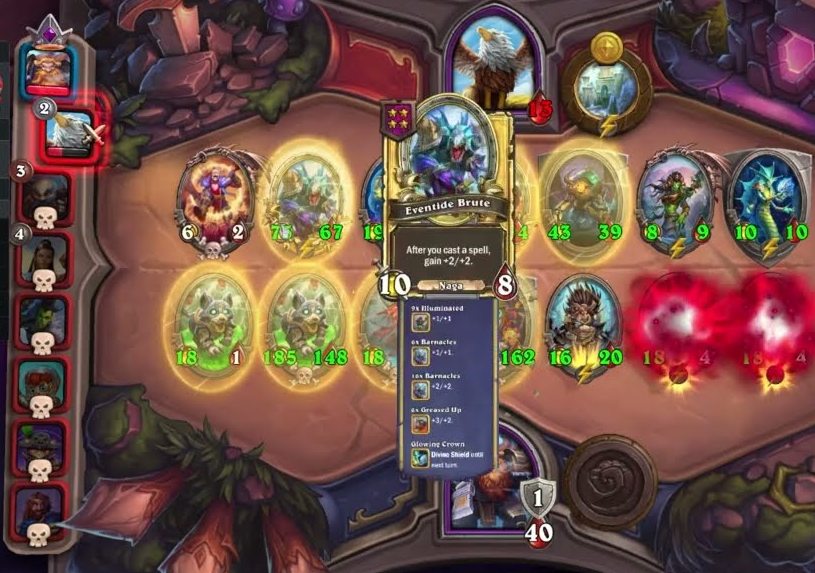
CCGs are usually played with two players, but some games can support more. There are many different ways to play a CCG, but most involve taking turns playing cards and attacking each other.
If you’re looking to make your own CCG game, you’ve come to the right place. This curated list of resources will teach you everything you need to know about creating and playing your own CCG.
Essential Elements of a CCG
Most CCGs share some common elements, even if they vary in other ways. These shared elements are what make a game a CCG.
- Types of CCG: There are many different types of CCGs, each with its own unique twist. Some CCGs focus on creature combat, while others focus on card effects. Here are some of the most popular types of CCGs:
- Magic: The Gathering – Magic is the original CCG, and is still the most popular. It focuses on creature combat, with each player trying to reduce their opponent’s life total to zero.
- Yu-Gi-Oh! – Yu-Gi-Oh! is a CCG based on the popular anime and manga series. It focuses on creature combat, with players using powerful monsters to defeat their opponents.
- Hearthstone – Hearthstone is a digital CCG based on the Warcraft universe. It focuses on card effects, with players using spells and abilities to defeat their opponents.
- Cards: The most essential element of any CCG are the cards. Cards are what players use to battle each other, with each card having its own unique effect. Cards are usually divided into two types: creature cards and spell cards. Creature cards are used to attack and defend, while spell cards have all sorts of different effects. The variety and depth of card games come from the different card combinations that players can create. Different card games have different rules for how cards can be played, but the basic principle is always the same: use your cards to battle your opponent and come out on top.
- Decks: One important aspect of playing collectible card games is deckbuilding. This refers to the process of constructing a Deck out of the cards a player owns. Each player begins with a small Deck, usually between 30 and 60 cards, and then can add more as they play. The size of a Deck can vary depending on the game but is typically between 40 and 100 cards. A player’s Deck must be composed of only the cards they own – no borrowing or sharing allowed! – so it is important to choose wisely when adding new cards. There are many factors to consider when building a Deck, such as a card synergy, creature types, and mana curve. With so many possibilities, deckbuilding is one of the most creative and rewarding aspects of collectible card games.
- Mana: In many card games, mana is the resource that players use to play their cards. Each card in the game has a mana cost, and players must have the required amount of mana in order to play that card. For example, if a player wants to play a card that costs three mana, they must have three mana in order to do so. Mana is often represented by some sort of gem or coin, and players will typically start with a small amount of mana at the beginning of the game. In order to gain more mana, players will usually need to play cards that generate mana or perform other actions that grant mana. Mana is an important resource in many card games, and players must carefully manage their mana in order to ensure that they can play their cards at the most opportune times.
- Life: Life is a resource that represents how much damage a player can take before they lose the game. Different games start with different life numbers. Players will lose life when they are damaged by creature attacks or spell effects. In some games, players can also gain life, usually through card effects. Life is an important resource because it determines how long a player can stay in the game. A player with low life is in danger of losing, while a player with high life is more likely to win. Therefore, players must carefully manage their life total and try to keep it as high as possible.
- Victory Conditions: In order to win a card game, players must achieve some sort of victory condition. The most common victory condition is to reduce the opponent’s life total to zero, but there are many other possibilities as well. Some games end when one player runs out of cards in their deck, while others have players trying to collect a certain number of victory points. There are many different victory conditions, and each one adds its own unique twist to the game.
These are the essential elements of a collectible card game. With these elements, players can battle each other using their own custom-built decks. Collectible card games offer a great deal of variety and depth, and they are perfect for players who enjoy strategic gameplay.
Resources
How are complex card games like Magic, Hearthstone and Yugi oh coded?
If you're a fan of complex card games like Magic, Hearthstone and Yugi oh, you may be wondering how they're coded. Surprisingly, the coding process isn't all that different from how other video games are made. In this Reddit post, we'll take a look at how these intricate card games are programmed and what goes into making them work. So, if you're curious about the behind-the-scenes action of your favorite card game, keep reading!
Unity
Gamekits
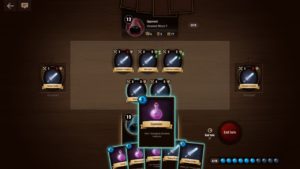
CCG Kit is the bestselling and most complete CCG solution for Unity. It is a great starting point to develop your own multiplayer collectible card games in the spirit of the classics of the genre. The asset provides all the basic elements to create your own game: card models and animations, card battle system, user interface, icons, etc.
Moreover, it comes with detailed documentation that will help you understand how such a project can be architected and implemented. With its comprehensive suite of features and professional-grade production values, CCG Kit is the perfect toolkit for any aspiring game developer looking to create their own card game.
Graphics
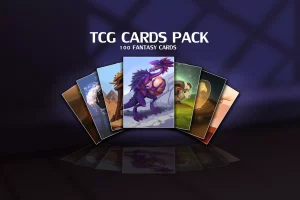
The TCG Cards Pack is a great choice for any trading card game. With 100 unique cards, it provides plenty of options for any player. The cards are also of a high quality, with each one being 2281x3190 pixels in size. This ensures that players can see the details of each card clearly.
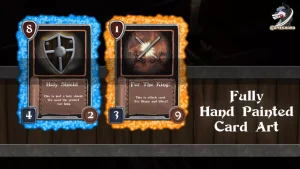
The hand-painted CCG card art pack includes one completed hand-painted CCG card art. The pack also includes PSD files for customizing all elements of the card, as well as PNG files that are ready for fast game integration. In addition, the pack contains card examples, prefabs, scene examples, and frame effects.
The images included in the pack are high quality and hand-drawn, making them ideal for use in any CCG game. With this art pack, you'll be able to create beautiful and unique cards that will stand out from the crowd.
Unreal Engine
Gamekits
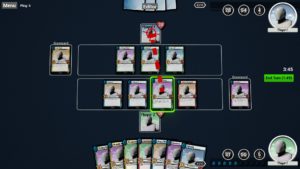
The CCG Toolkit is card game framework for Unreal Engine. It allows developers to create their own single and multiplayer card games.
The 100% Blueprint Framework offers an easy way for developers to get started, while the Multiplayer support ensures that players can enjoy their card games with others. The highly customizable nature of the CCG Toolkit means that developers can create games that are truly unique, and with the Deck builder, they can create and save limitless custom decks.
The Toolkit offers a deck generator to filter, shuffle, and weigh cards in a deck as well as customize card placement. There is also a board player along with mouse-over previews of cards and a card graveyard. In addition, the Toolkit comes with 10+ included card abilities with multiple settings variations, a turn-based gameplay system, and a player and opponent UI framework.
It also has player health and mana systems, cards and board player interactions, basic card movement and visual gameplay cues, basic win and loose conditions, turns and game timers, a simple main menu, deck selection, arena selection, and server selection menus. The Toolkit also includes several custom function libraries and an in-game notification manager.
The in-game card positioning editor and game tools also allow for a great deal of flexibility when it comes to gameplay. With so many features, the CCG Toolkit is sure to meet the needs of any developer looking to create their own card game experience.